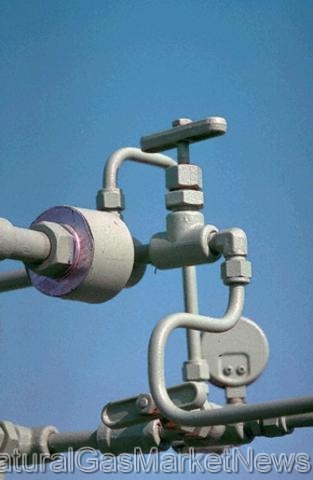Wednesday, 27 April 2011
Potential U.S. Natural Gas Supplies Have Jumped 3%, Industry Experts Say
 A key organization of industry experts announced today that the amount of producible natural gas in the United States has jumped significantly -- 3 percent -- since its last assessment two years ago.
A key organization of industry experts announced today that the amount of producible natural gas in the United States has jumped significantly -- 3 percent -- since its last assessment two years ago.
The supply increase of 61 trillion cubic feet (tcf) reported today by the Potential Gas Committee is one of the larger increases reported by the committee in its 46-year history of reports. The report sets the country's total resource base at 1,898 tcf, its highest number ever.
But the jump pales in comparison to the giant 36 percent leap the committee reported two years ago, mostly gas from emerging shale gas formations, such as the Marcellus in the Northeast and the Haynesville in the South. That report cemented the arrival of the shale gas booms, incessantly declared a "game-changer" in the energy world.
The increase reported today came from the same source -- shale gas. In particular, most of the increase is coming from shale formations along the Gulf Coast, such as Louisiana's Haynesville Shale.
"Most of the growth is in shale gas," said John Curtis, a geology professor at the Colorado School of Mines who coordinates the industry effort. "That's where the production has been."
The Atlantic Coast, where the dynamic Marcellus Shale is located, shows little increase in the report. A major reason for the increases is advances in the technology that companies use, such as improved seismic testing that allows geologists to get a better understanding of underground formations.
The figures represent what the committee considers to be "technically recoverable" with existing technology. They do not take into account whether it would be profitable for a company to produce the gas at today's prices, or any other price.
The jump has taken place even though the nation has consumed about 40 tcf of the supplies reported in the committee's last assessment, issued in 2009.
Curtis, who serves as director of the Potential Gas Agency at the Golden, Colo., school, which provides guidance and technical assistance to the Potential Gas Committee, said there is no indication that the amount of gas in the United States is peaking.
"We see nothing that would make this trend reverse," Curtis said. "There's more gas out there to be recovered that we don't have our finger on."
Other countries, such as those in Europe, stand to have their own shale gas booms, he added.
"There's nothing about the geology that says they're not going to do as well as we are," he said.
Though the increase comes from shale, he noted that two-thirds of the total amount of potential gas -- about 1,200 tcf -- is from sources other than shale, coal-bed methane and traditional reserves.
"It's not just a shale story by any means," Curtis said.
The Potential Gas Committee is staffed by Curtis at the Colorado School of Mines, but uses information gathered from industry members, particularly the independents who drive domestic exploration.
Because of its industry connections, the committee has access to information from gas producers that other estimators, such as the U.S. Geological Survey, often do not have access to.
Curtis noted that there are some places where geologists know gas is likely to exist, but where they don't have good information because companies have not done much exploration. An example is the Utica Shale that underlies much of the Marcellus Shale in the Northeast.

This post was written by: HaMienHoang (admin)
Click on PayPal buttons below to donate money to HaMienHoang:
Follow HaMienHoang on Twitter









0 Responses to “Potential U.S. Natural Gas Supplies Have Jumped 3%, Industry Experts Say”
Post a Comment